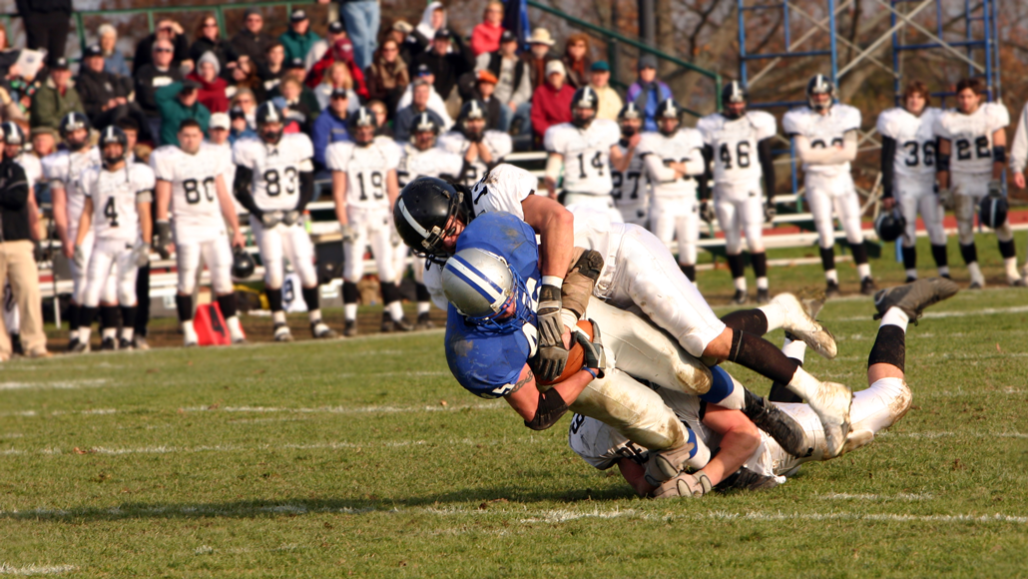Concussions leave clues in the blood
Blood tests in hundreds of college athletes turned up proteins signaling brain injury

Certain proteins in the blood rise in college athletes following a concussion, researchers report.
jpbcpa/iStock/Getty Images Plus
Hitting your head during a fall, accident or while playing sports can result in a concussion. You might feel dizzy, sick to your stomach or confused. You may even briefly lose consciousness. Doctors carefully assess these and other symptoms to diagnose concussions, a type of brain injury. But these symptoms might also develop when something else is wrong. How to know the difference? Scientists have just uncovered three markers in the blood that appear to signal someone has been concussed.
Their finding emerged from a large study of sports-related concussion. All three markers are proteins. And blood levels of each were higher in athletes who had suffered a concussion.
In the United States alone, college athletes sustain more than 10,500 sports-related concussions each year. The new blood markers may one day help identify athletes who have suffered such a brain injury from those who haven’t.
Michael McCrea is a neuropsychologist at the Medical College of Wisconsin in Milwaukee. He led a research team that recruited 1,760 healthy college athletes into a study. Then the researchers followed these athletes from 2015 through mid-2018. Some played contact sports, such as football or rugby. Others played non-contact sports, such as baseball, basketball or track and field.
At some point during the follow-up, 504 athletes developed a concussion. At several points in the week after their injury, McCrea’s team again sampled the athletes’ blood. The researchers then compared these blood values to 342 athletes who had reported no head injuries. Of these, 138 played contact sports. The rest played noncontact sports.

Educators and Parents, Sign Up for The Cheat Sheet
Weekly updates to help you use Science News Explores in the learning environment
Thank you for signing up!
There was a problem signing you up.
McCrea’s group found levels of three proteins were higher in the concussion group than before their injury. Levels of those proteins did not change throughout the study in athletes who sustained no head injuries.
McCrea’s team shared its findings January 24 in JAMA Network Open.
More testing is needed
Glial cells help support the brain’s nerve cells. And when glial cells are injured, they release one of the elevated proteins. Another protein signals injured nerve cells. The third, known as tau, points to damage in parts of nerve cells that transmit nerve impulses. Past studies have identified these proteins as potential markers of more severe brain injury.
Each of the three proteins, says McCrea, can serve as a sign that brain cells are damaged.
However, he adds, these biomarkers are not yet ready to use in the clinic or on the field. Scientists need to figure out which combination of proteins most reliably points to brain injury, he explains. It’s also possible that levels may not rise right away or could fall back to normal shortly after the injury. So researchers still need to figure out how to quickly they need to test for these proteins, McCrea says.
Biomarkers should consistently and accurately indicate a problem, says Juliana VanderPluym. She is a neurologist at the Mayo Clinic in Phoenix, Ariz., who did not work on the study. “It is important to consider [biomarkers] as an aid,” she adds. They should not be the main factor in making diagnoses.
Around eight out of every 10 participants in this study were male athletes. “It will be important in future studies to see whether the results are similar” for women, says VanderPluym. Female college athletes have a higher rate of concussions than males do. That finding emerged in a 2016 study in the Journal of Athletic Training. Women also can experience more severe symptoms after a blow to the head than men. They may experience worse damage to the brain, too.







